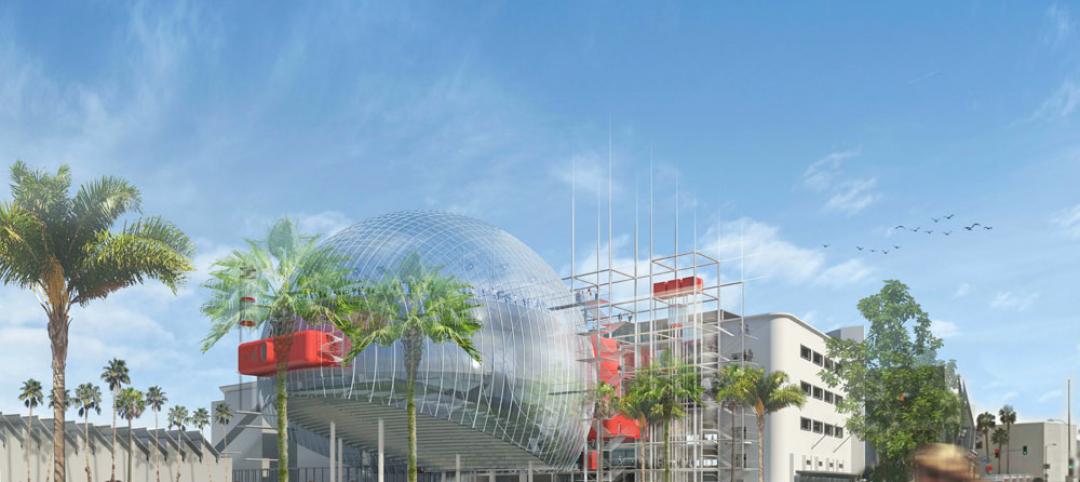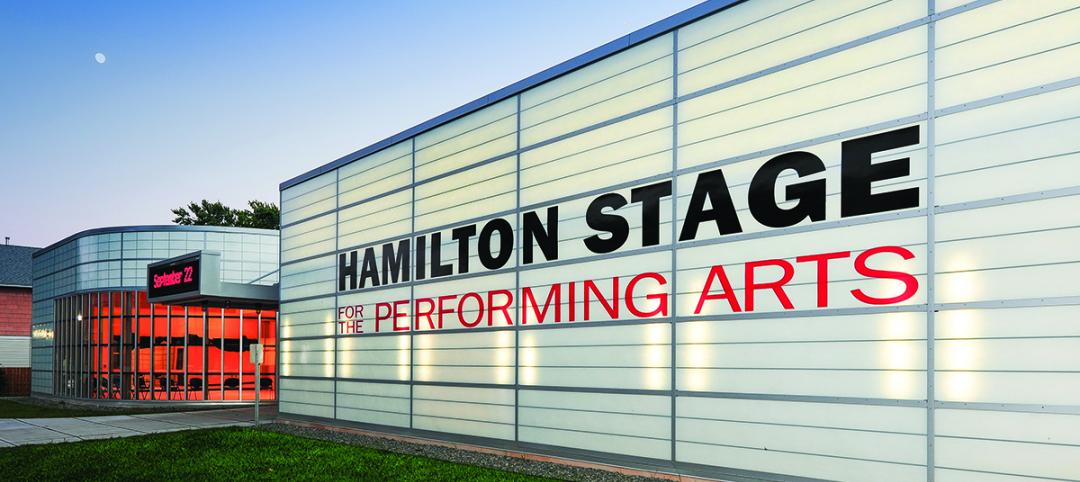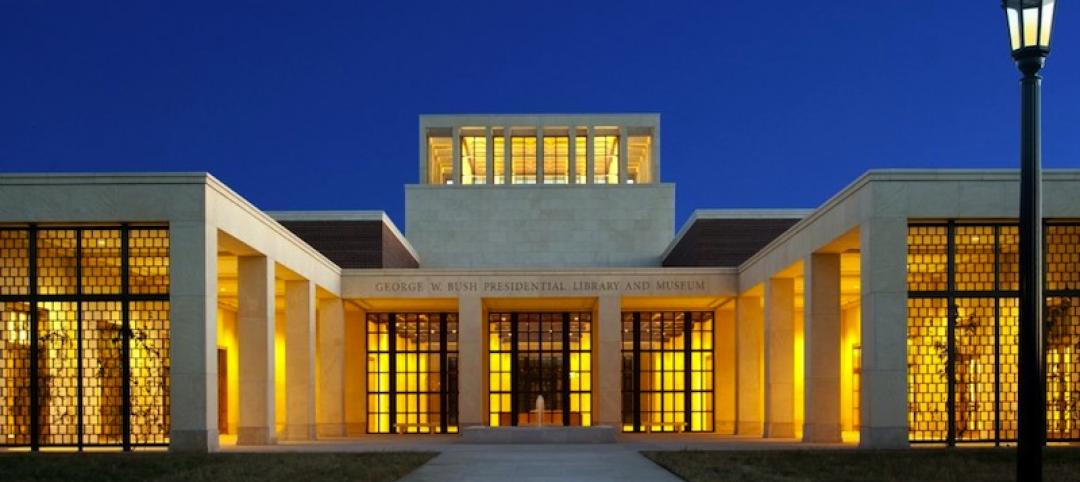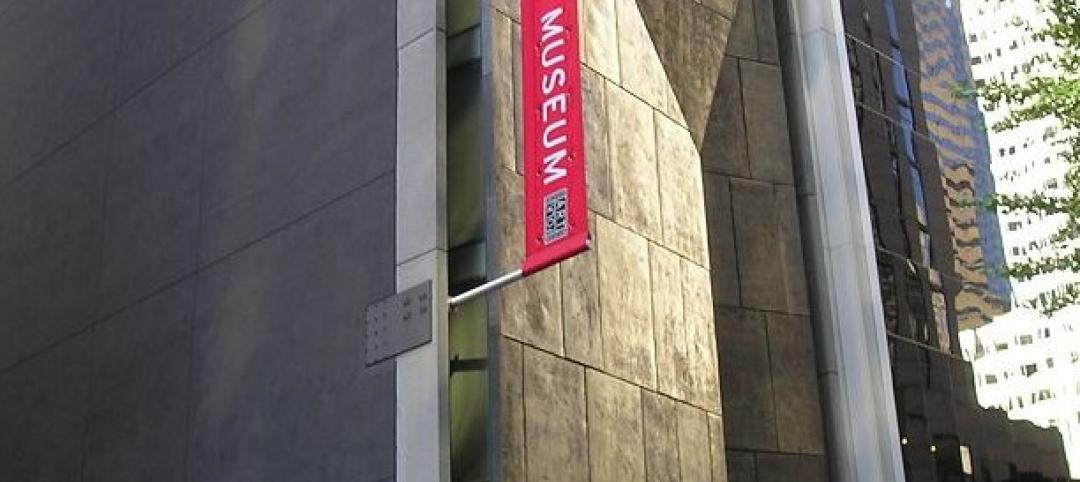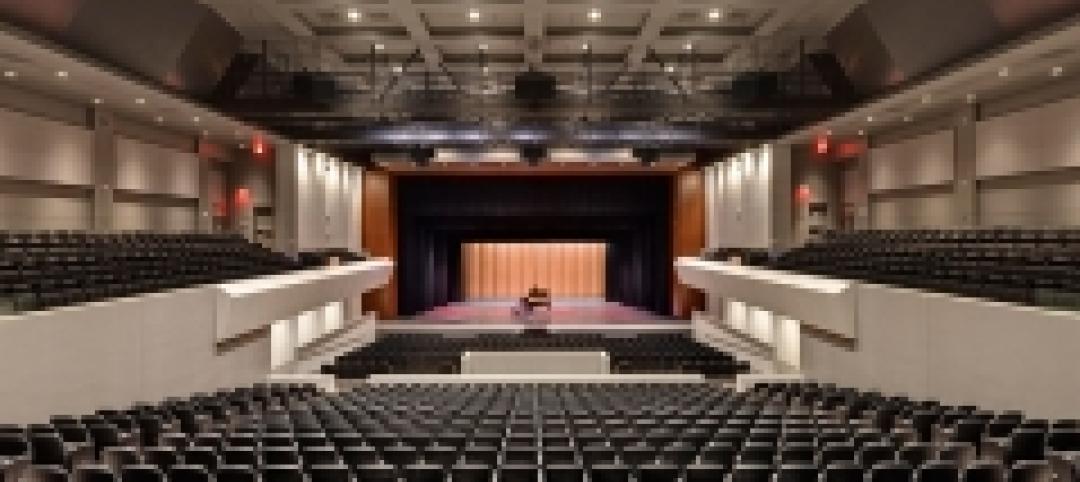On May 24, The Shed, a non-profit cultural organization that’s backed by some of the heaviest hitters in New York City, announced the completion of erecting the structural steelworks for the telescoping outer shell of a 200,000-sf artistic center, also called The Shed, under construction in Lower Manhattan’s west side.
This announcement came one day after former New York Mayor Michael Bloomberg said that he would be donating a total of $75 million to this project through his Bloomberg Philanthropies.
That brings to $421 million that amount that has been raised so far from this project’s $500 million capital campaign, according to the New York Times. The Shed’s benefactors include media mogul Barry Diller, and Stephen Ross, chairman of the builder/developer Related Companies.
While in office, the Bloomberg administration rezoned the area running roughly from 30th Street to 41st Street, and between 8th and 11th avenues for its ambitious redevelopment plan that included Hudson Yards and The Shed. Bloomberg personally spearheaded the idea of placing a cultural center in the midst of this office-heavy redevelopment. Construction of The Shed began in 2015 and should be completed next year.
When it opens in the Spring of 2019, The Shed will run along the popular High Line elevated walkway and garden. The organization is leasing the land, and will lease the building, from the city.
“This will be a platform for art, for artists to create on,” says Daniel Doctoroff, a former deputy mayor who is chairman of the board of The Shed. He said Bloomberg’s mandate for this project was that it be “unique” and put the lower west side “on the cultural edge.”

David Rockwell of The Rockwell Group (left) and Liz Diller of Diller Scofidio + Renfro talk about how The Shed was designed to be as flexible as possible to accommodate the uncertain artistic world of the future. Image: BD+C
Elizabeth Diller, a partner with Diller Scofidio + Renfro, which with The Rockwell Group designed the center, says this project forced the Building Team to think about what the arts would be like in 10 to 15 years. Their conclusion was that this is unknowable, so the building needed to be designed with the utmost flexibility.
A manifestation of that flexibility is a gigantic movable shell, open on three sides, which can be deployed over a 20,000-sf open plaza to create a 17,500-sf hall whose lighting, sound, and temperature can be controlled. The 8-million-pound shell is mounted on 6-ft-diameter wheels that roll along slide rails. The structure, operated by 90-horsepower motors, can be opened or closed within seven minutes.

The Shed's movable shell sits on steel wheels, 6 ft in diameter, that roll on slide rails. Image: BD+C
The movable shell rises 135 feet above the plaza, and can support up to 4,000 tons of building systems and production equipment. Its exposed steel will be clad in translucent pillows of ETFE, a Teflon-based polymer, some of whose panels will measure 70 ft in length.
The plaza would have a theater seating capacity of 1,250 and a standing capacity of 3,000. (By comparison, New York’s Radio City Music Hall seats just over 6,000 people; and the city’s Beacon Theater seats roughly 2,900.)
The shell retracts into a base building with eight floors, each designed for multiple uses. The top floor will house a 3,300-sf rehearsal space, a 9,500-sf flexible events space, and a 1,700-sf labs dedicated to early-career local artists.
Below that is an 11,700-sf, 500-seat black-box theater that can be subdivided into three smaller performance spaces. The building will also include two levels of galleries with a combined 25,000 sf of exhibit space and 19-ft-high ceilings.
Back-of-house space for offices and mechanicals, dressing rooms, and storage is on the first floor.
In charge of programming The Shed is Alex Poots, the organization’s Artistic Director and CEO. Previously, Poots was founding Director of the Manchester International Festival, and Artistic Director of New York’s Park Avenue Armory. He said The Shed would “welcome artists and audiences from all walks of life.” The Shed has already launched a free, citywide residency program in dance activism for young people, Flex NYC, in cooperation with Reggie Gray of D.R.E.A.M. Ring dancers.
The organization also just hired Kevin Slavin as its Chief Technology Officer. Slavin comes from MIT's Media Lab.
Other Building Team members include Thornton Tomasetti (SE), Sciame Construction (CM), Hardesty & Hanover (kinetic engineering services), Jaros Baum & Bolles (MEP, FP), Levien + Co. (owner’s rep), Cimolai (structural steel), Cimolai Technology (kinetic services), and Stonebridge (steel erection).
Related Stories
| Apr 17, 2013
First look: Renzo Piano's glass-domed motion pictures museum
The Academy of Motion Picture Arts and Sciences last week released preliminary plans for its $300 million Academy of Motion Picture Arts and Sciences museum in Los Angeles, designed by Renzo Piano and local architect Zoltan Pali.
| Apr 16, 2013
5 projects that profited from insulated metal panels
From an orchid-shaped visitor center to California’s largest public works project, each of these projects benefited from IMP technology.
| Apr 12, 2013
Nation's first 'food forest' planned in Seattle
Seattle's Beacon Food Forest project is transforming a seven-acre lot in the city’s Beacon Hill neighborhood into a self-sustaining, edible public park.
| Apr 12, 2013
Chicago rail conversion puts local twist on High Line strategy
Plans are moving forward to convert an unused, century-old Chicago rail artery to a 2.7 mile, 13 acre recreational facility and transit corridor.
| Apr 11, 2013
George W. Bush Presidential Center achieves LEED Platinum certification
The George W. Bush Presidential Center announced today it has earned Platinum certification by the U.S. Green Building Council’s Leadership in Energy and Environmental Design program. The Bush Center is the first presidential library to achieve LEED Platinum certification under New Construction.
| Apr 11, 2013
American Folk Art Museum, opened in 2001, to be demolished
Just 12 years old, the museum designed by Tod Williams and Billie Tsien will be taken down to make way for MoMA expansion.
| Apr 5, 2013
Snøhetta design creates groundbreaking high-tech library for NCSU
The new Hunt Library at North Carolina State University, Raleigh, incorporates advanced building features, including a five-story robotic bookBot automatic retrieval system that holds 2 million volumes in reduced space.
| Apr 2, 2013
6 lobby design tips
If you do hotels, schools, student unions, office buildings, performing arts centers, transportation facilities, or any structure with a lobby, here are six principles from healthcare lobby design that make for happier users—and more satisfied owners.



